How to Deal with Bed Bugs
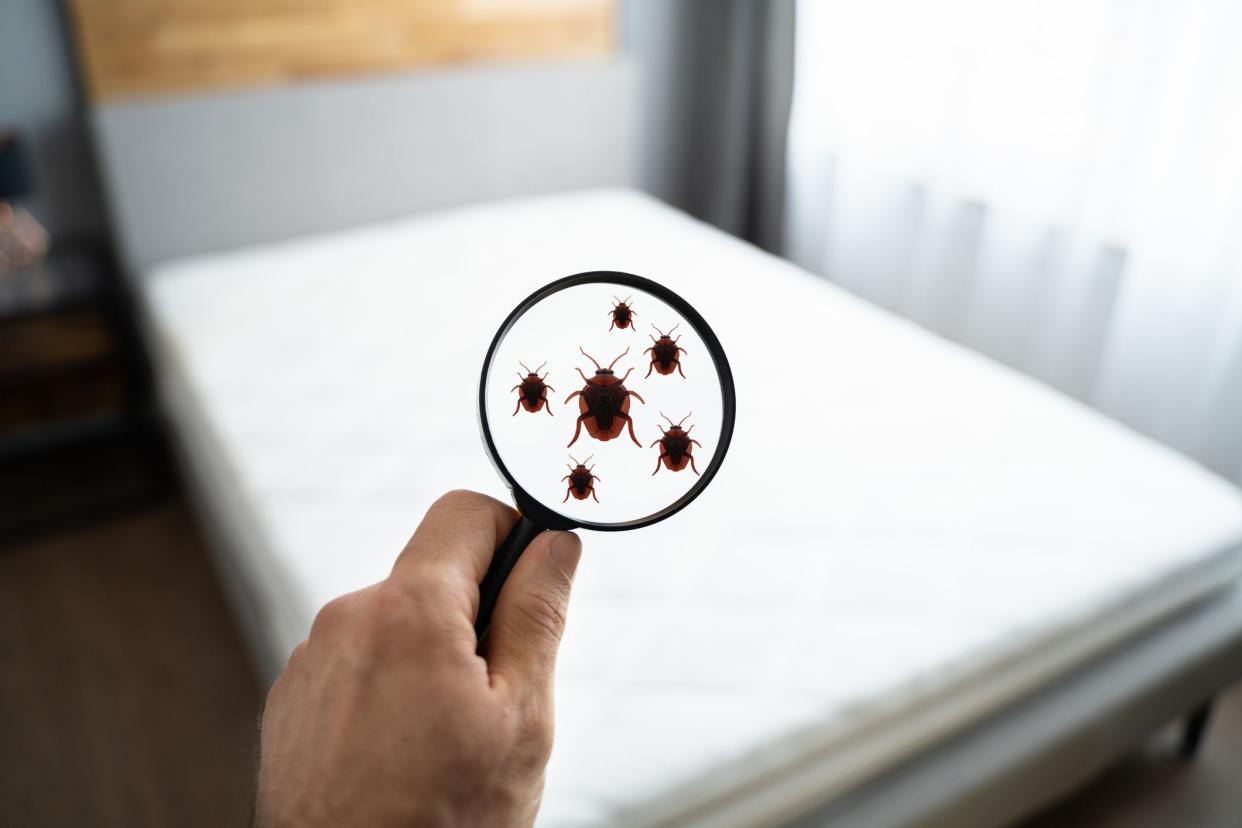
Bed bugs have become all too common. The National Pest Management Association found that one in five Americans has experienced an infestation in their home or knows of someone who has encountered the insects. Potent pesticides made the creepy-crawlies practically disappear from the mid-1950s to the 1990s; however, they’ve come roaring back. Most pest control experts agree their numbers are increasing. The insects’ long absence has left many Americans unable to identify them, and pest control professionals report most of their clients confuse bed bugs with other creatures. Read on to discover how to identify bed bugs and what you can do about them.
Related: These Are the Nation's Most Bedbug-Infested Cities
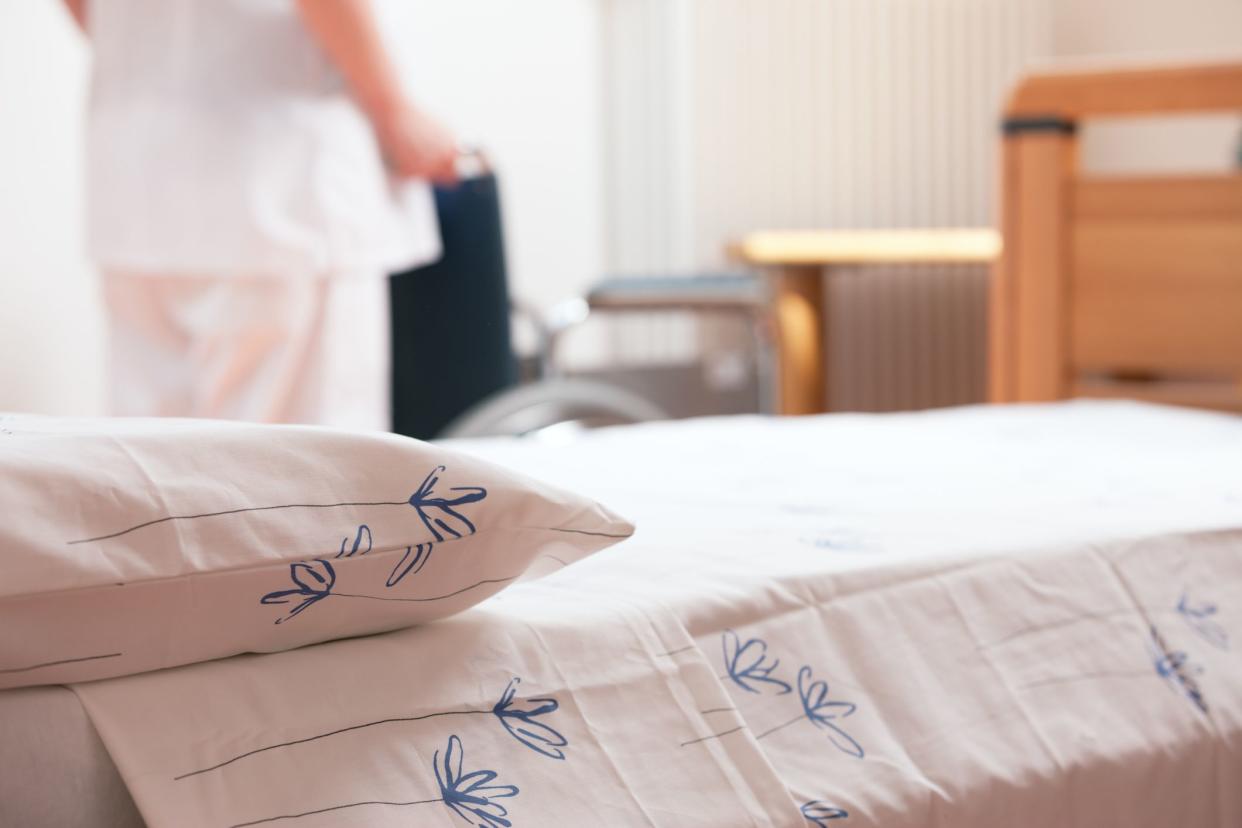
Bed bugs have been found in all 50 states. Chicago is the most bed-bug infested city in the U.S., according to an Orkin study, but Philly, New York, and Detroit are hot on its heels. Bed bugs are commonly found in single-family homes, but they also frequent surprising places such as nursing homes, schools and daycare centers, offices, college dorms, hospitals, and public transportation.
Related: 22 Cheap, Natural Ways to Rid Your Home of Pests
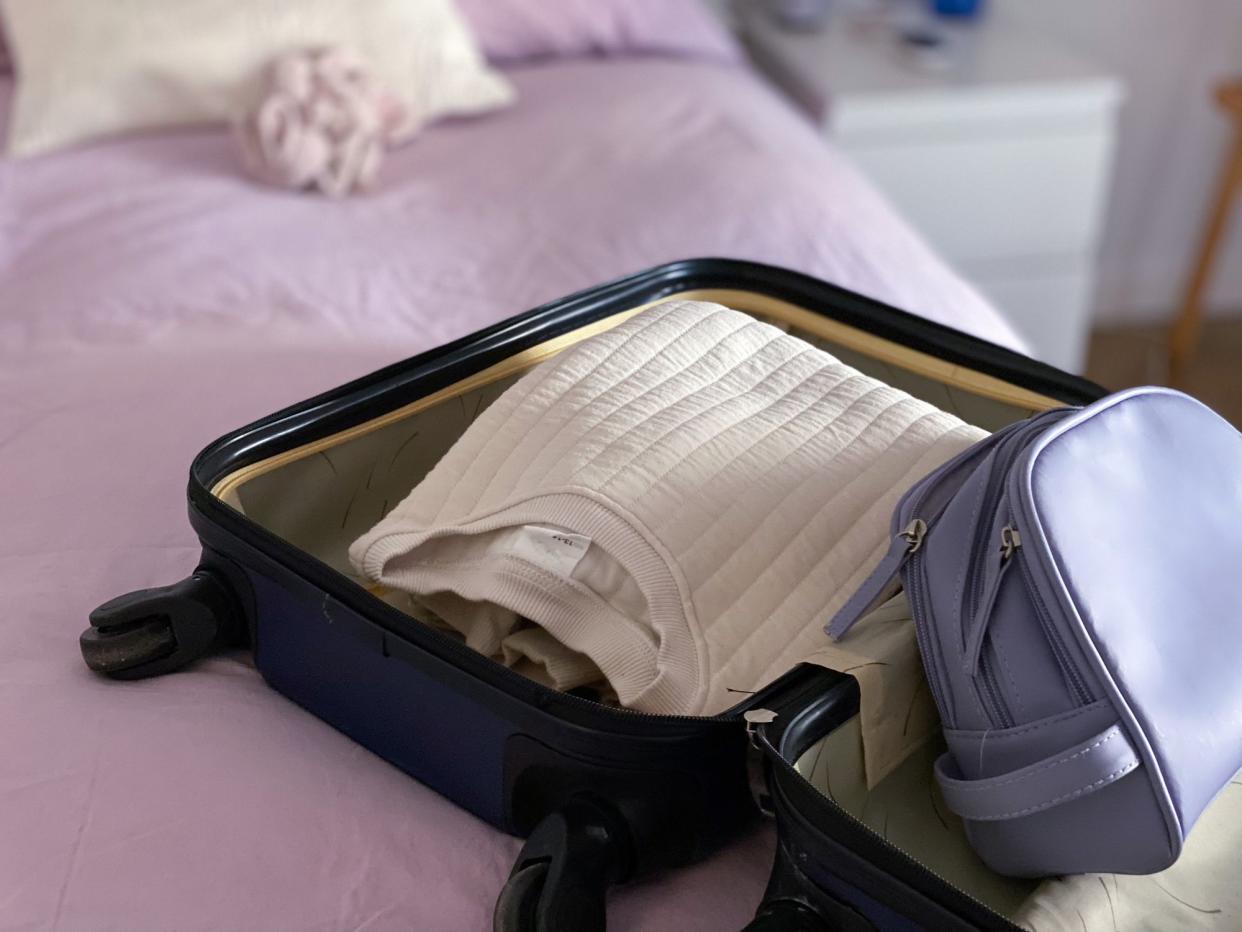
Many bed bugs hitch rides into single family homes and apartments when their occupants are traveling. They’ll crawl from hotel beds into suitcases, purses, and backpacks, and on to clothes. Bed bugs can also come into homes on used furniture and mattresses. Once they’re inside multi-family dwellings, like apartment complexes, they can easily move from one dwelling to another.
Related: The Best Ways to Fight Fleas
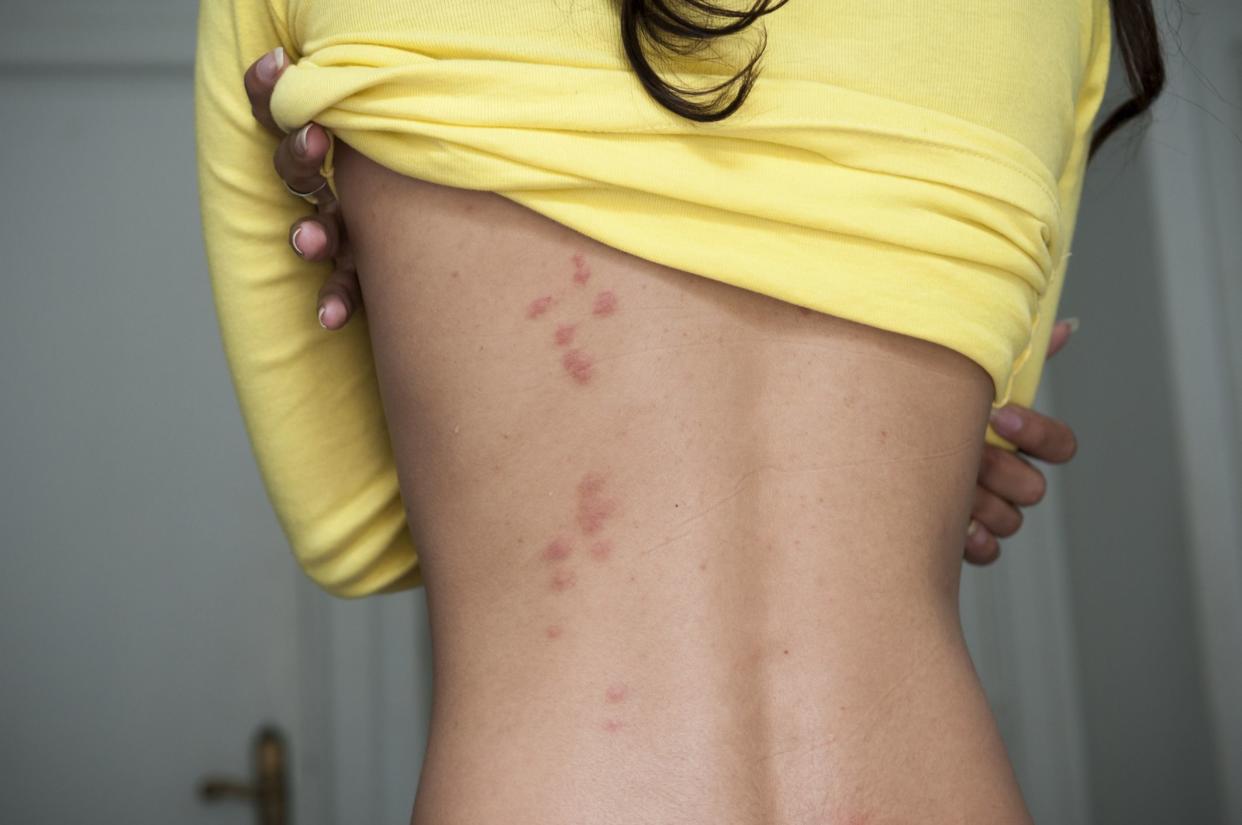
Bites are a red flag that an infestation is present. Luckily, the common bed bug isn’t known to spread disease. That doesn’t mean you want to keep them around. Their blood-sucking bites cause itchy, red welts.
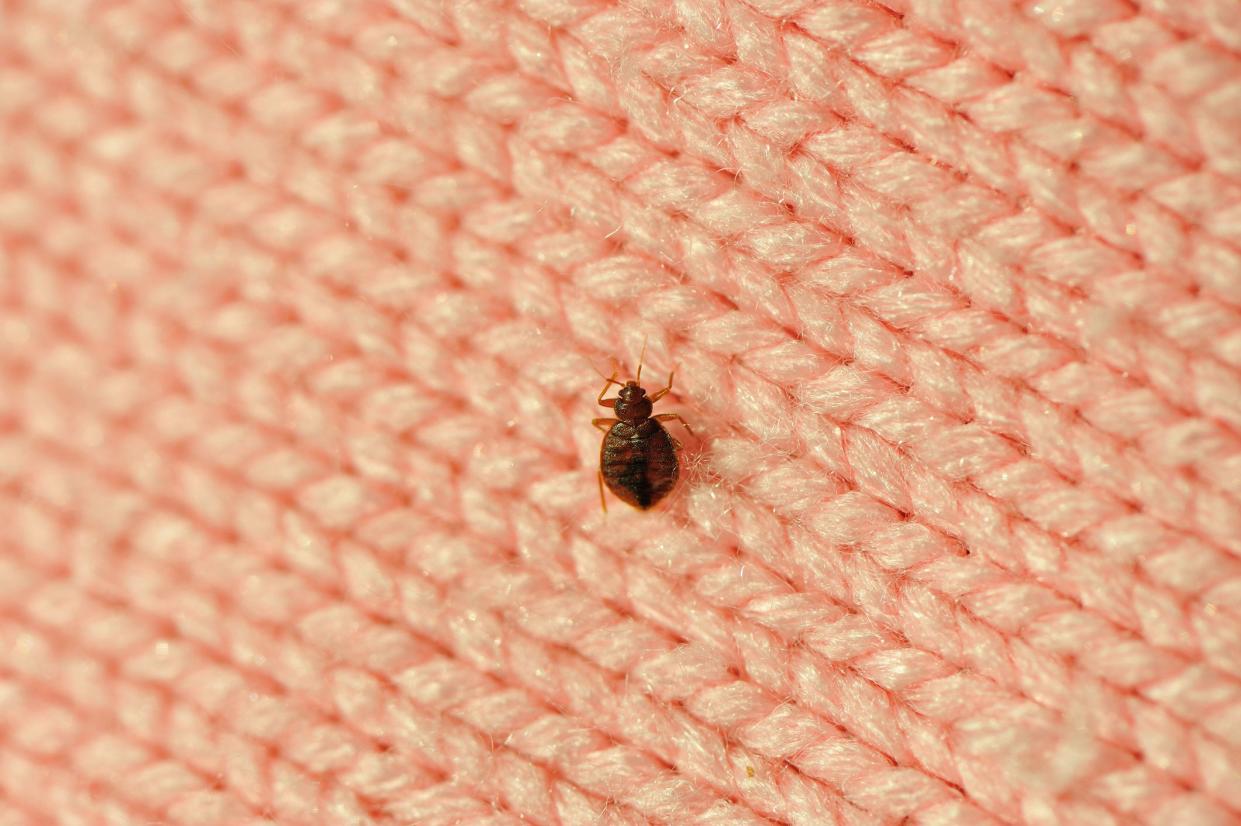
You may also see live bed bugs. The wingless insects range in size from 1 to 7 millimeters (about the size of an apple seed). They are reddish brown and oval shaped. Adults may also appear with small translucent eggs and nymphs (juveniles) which may be white or yellow. Unless they’ve recently fed, which will turn them a darker color, the tiny juveniles may be difficult to spot with the naked eye.
For more smart household tips, please sign up for our free newsletters.
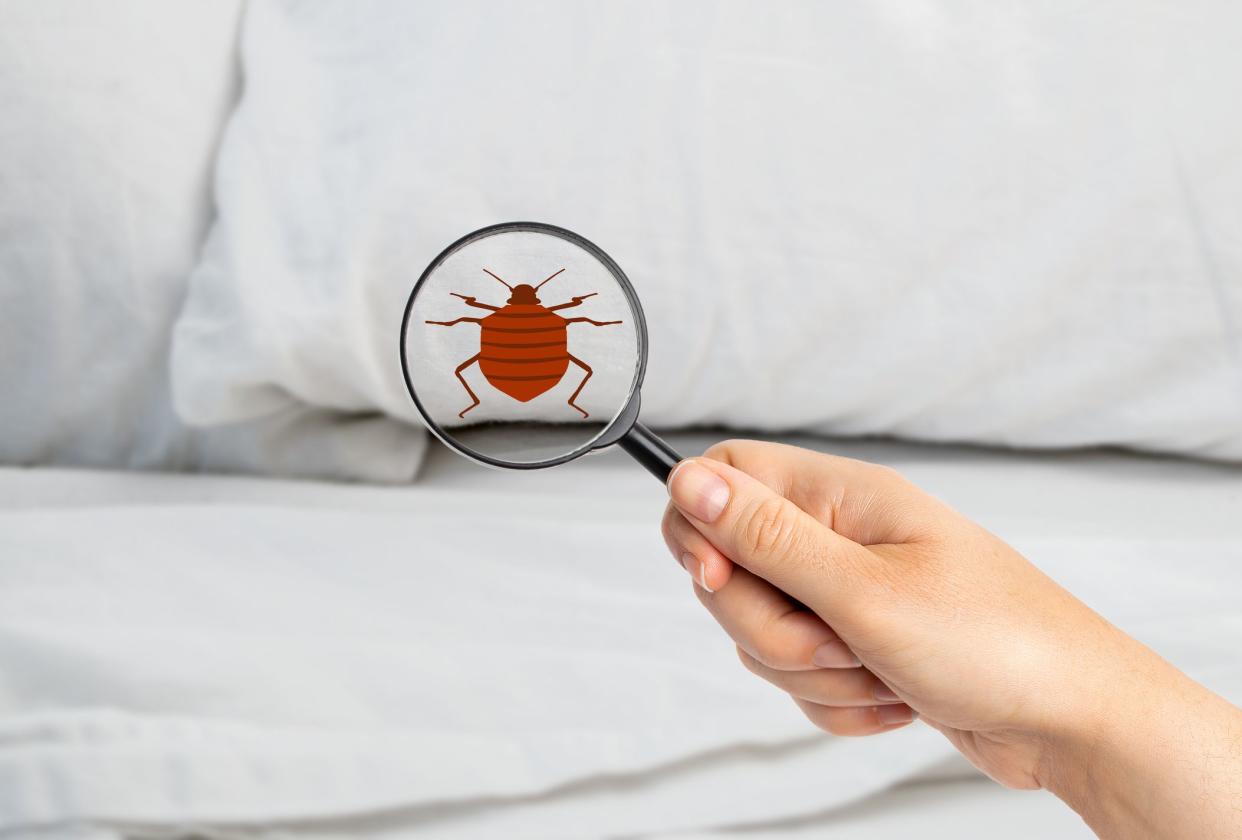
You may also see tiny dark spots about 1 millimeter in size on fabric. This is bed-bug excrement. If you see rusty or reddish stains, those are signs of bed bugs, too. These spots are evidence of bed bugs being crushed, which may happen when people roll around in their sleep.
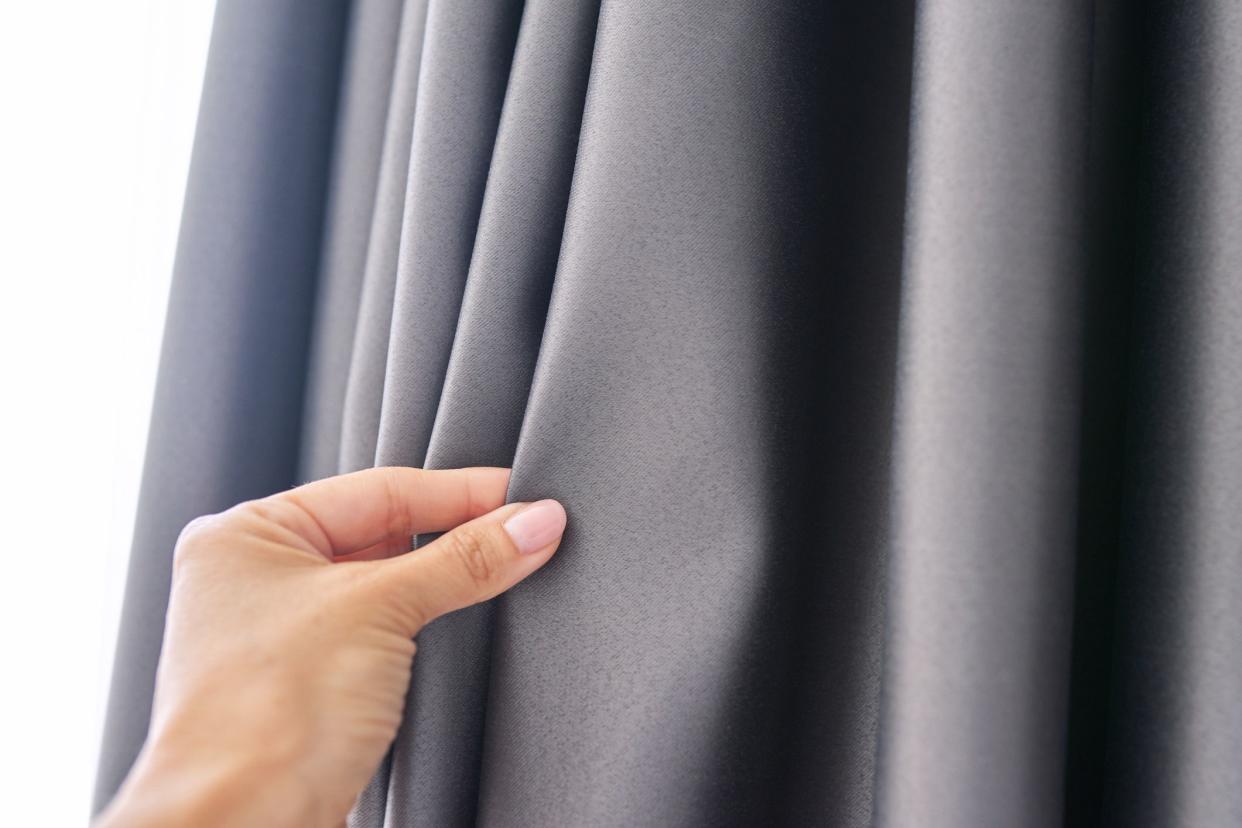
Bed bugs live up to their names by preferring to hang around beds. That’s where sleeping people present themselves to the nocturnal, bloodsucking pests as midnight snacks. However, beds aren’t the only places they frequent. They may be around the seams and tags of a mattress and box springs, in the cracks of a bed frame, and in a headboard. As the infestation grows, they’ll venture beyond the bed and bed-adjacent areas. You may find them in chairs and couches, curtains, furniture joints, in electrical outlets and appliances, under loose wallpaper and wall hangings, and at the junction of a wall and a ceiling.
Related: 15 Ways to Repel Bugs Naturally (and Cheaply)
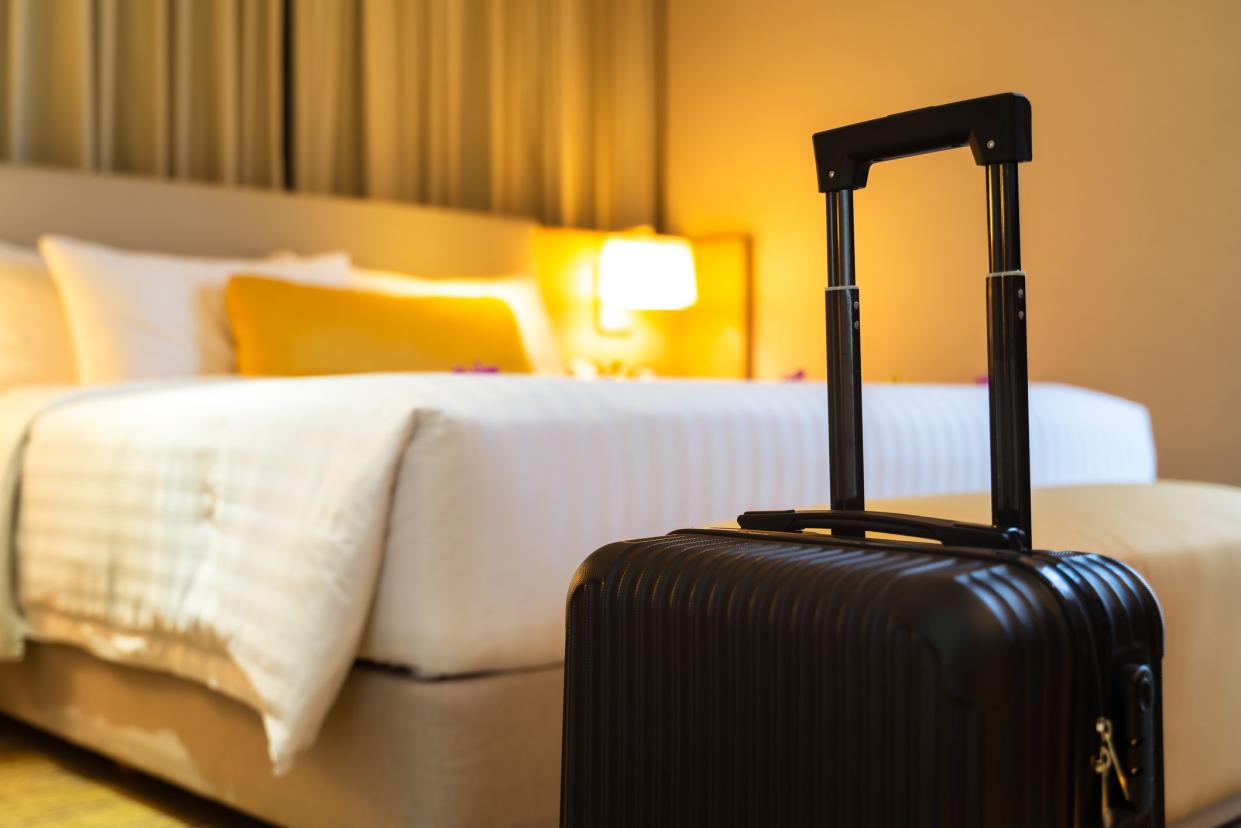
The best way to end an infestation is never to have one. Savvy traveling can help you from bringing home hitchhikers. Opt for hard surfaces over soft ones in your travel gear, including a hard-shelled suitcase and plastic bags to organize your belongings. Place your bags on a luggage rack or in the bathroom, instead of on the carpet or bed. Inspect your hotel room using the previously identified methods. If you see evidence of an infestation, switching rooms may not help since the insects can easily travel between spaces. Once you return home, inspect your suitcase, clothing, and carrying bags for evidence of unwanted guests.

If you end up with an infested home or space, there are a few steps you need to take before you attempt to kill the pests. First up? Reducing clutter. Reduce the areas where bed bugs may hide and present a clean space to treat. Eliminate excess paper products, such as magazines, newspapers, and cardboard. Be careful not to move items from an infested area to a non-infested area.
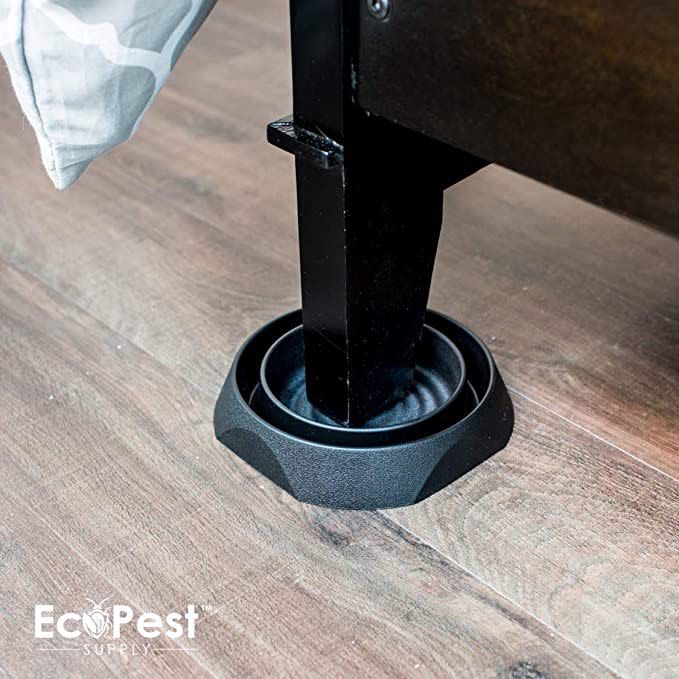
Because the bed bugs are most likely centered around your bed, make it more difficult for them to spread by isolating your bed. Separating this piece of furniture will also make the bed bugs easier to treat. Place bed bug interceptors, like these, around the bed to keep the insects from moving away from the bed. Inspect, and potentially replace the interceptors daily. You’ll need to leave them in place for a year.
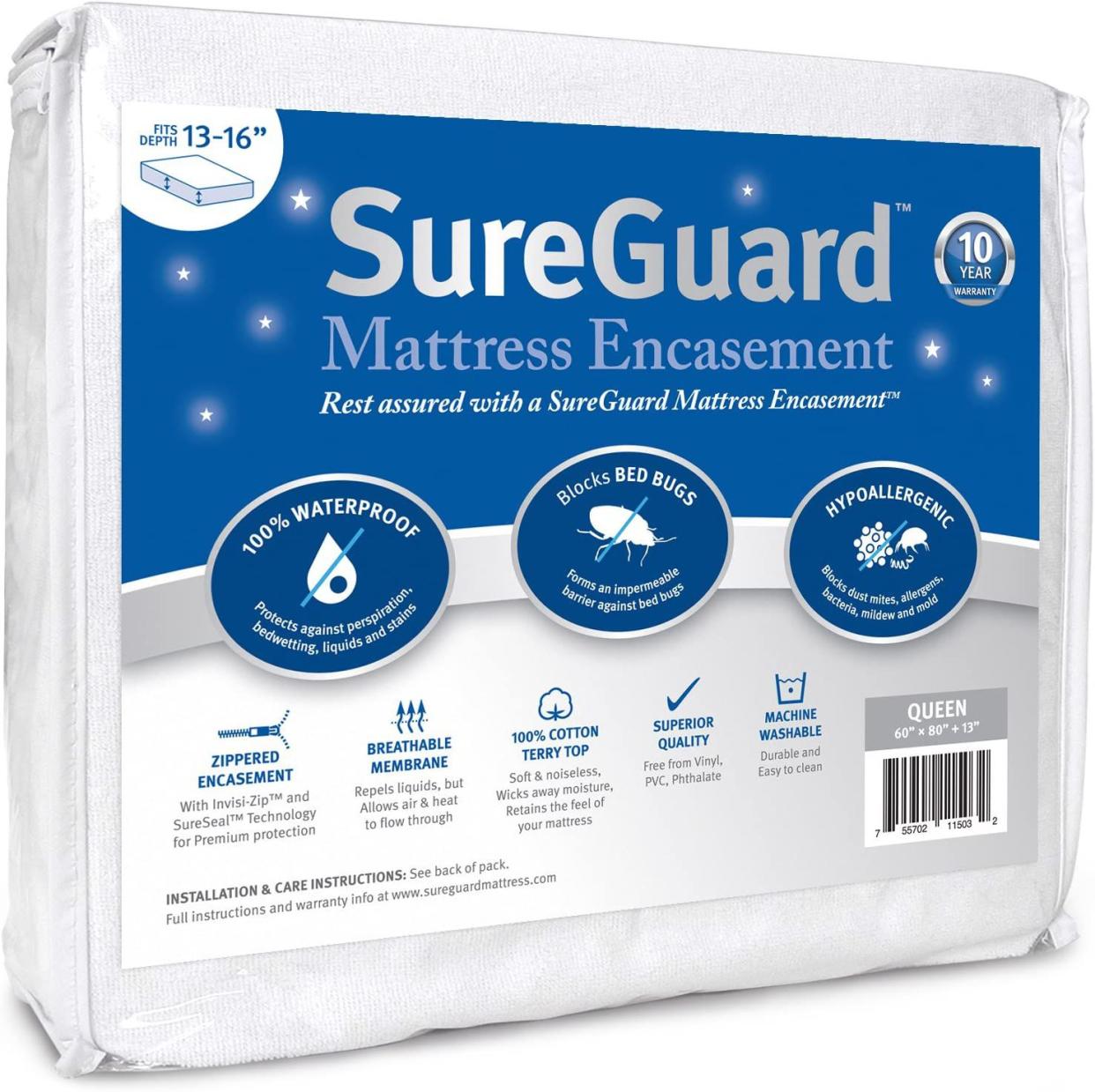
To make sure all pests are gone, place your mattress in a cover, called an encasement. These bags will trap the bed bugs and starve them. You’ll need to leave your mattress in this bag for a year to ensure the bed bugs have died. Not willing to wait a year? You’ll need to replace your mattress. If the mattress is leaving the house, it’s wise — and kind — to secure it in an encasement and label that it’s infested with bed bugs to keep the problem from spreading.
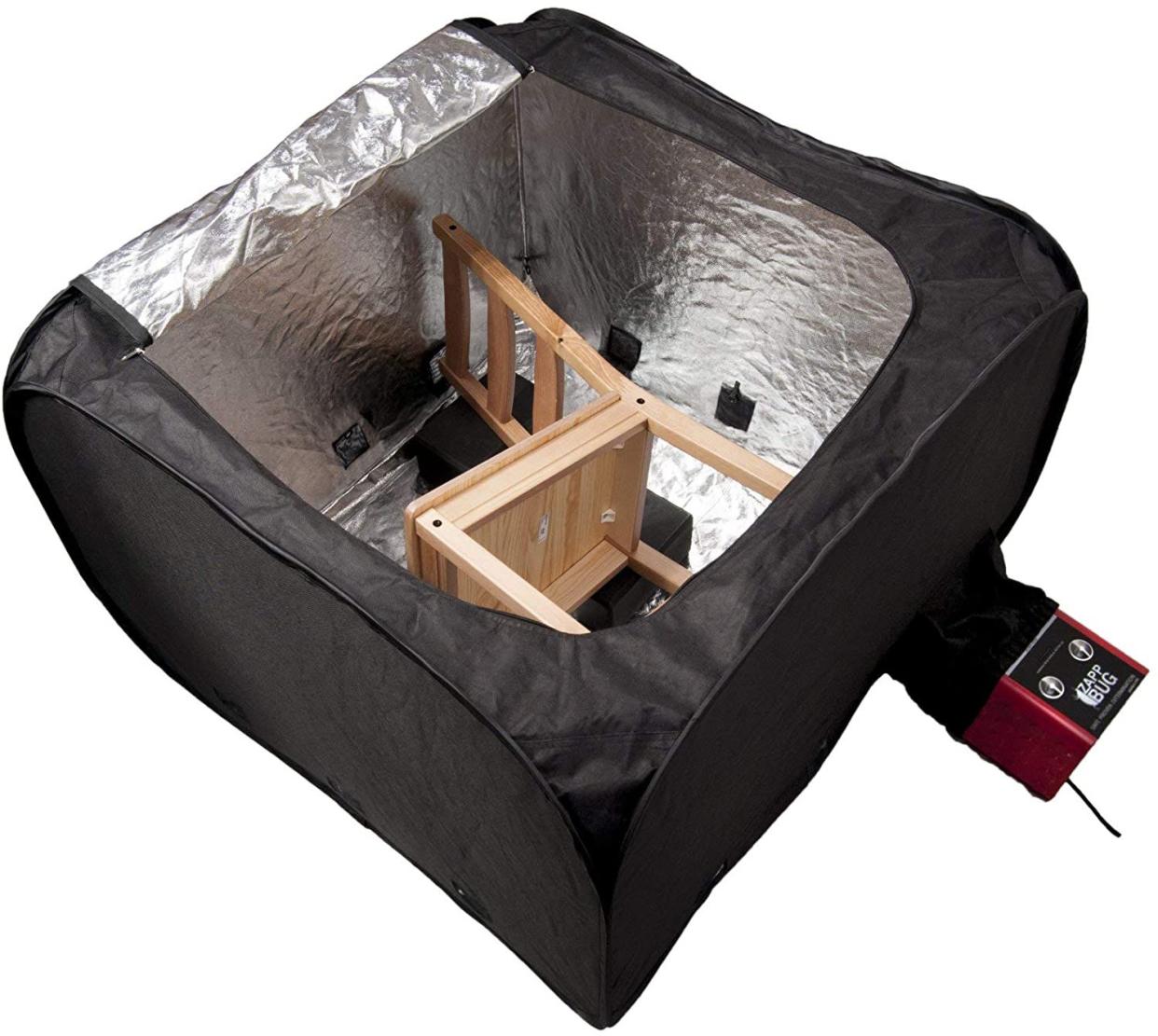
Portable heat chambers, such as this one, help eliminate bed bugs. These devices treat personal items like clothing, as well as smaller items like bedding that you don’t necessarily want to treat with pesticides. Washing the items may not be enough to eliminate live insects and their eggs; however, heat treating the items will kill both.
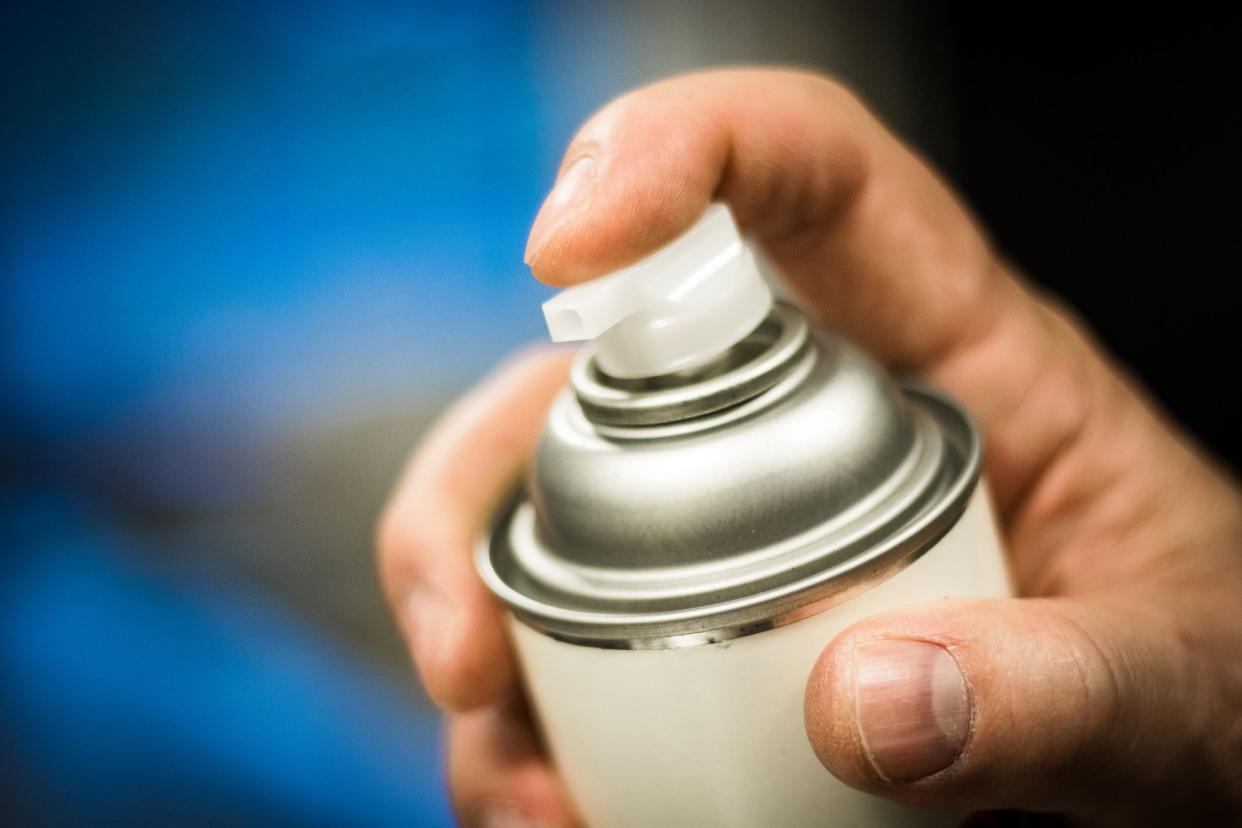
There are 300 EPA-registered pesticides classified to treat bed bugs. Find the best one for you in this Bed Bug Product Search Tool from the EPA that takes stock of the level of the infestation, the type of product you’re looking for, and active ingredients. Keep in mind that some pesticides won’t kill the eggs, so you may need to repeat the treatments multiple times to squash the infestation.
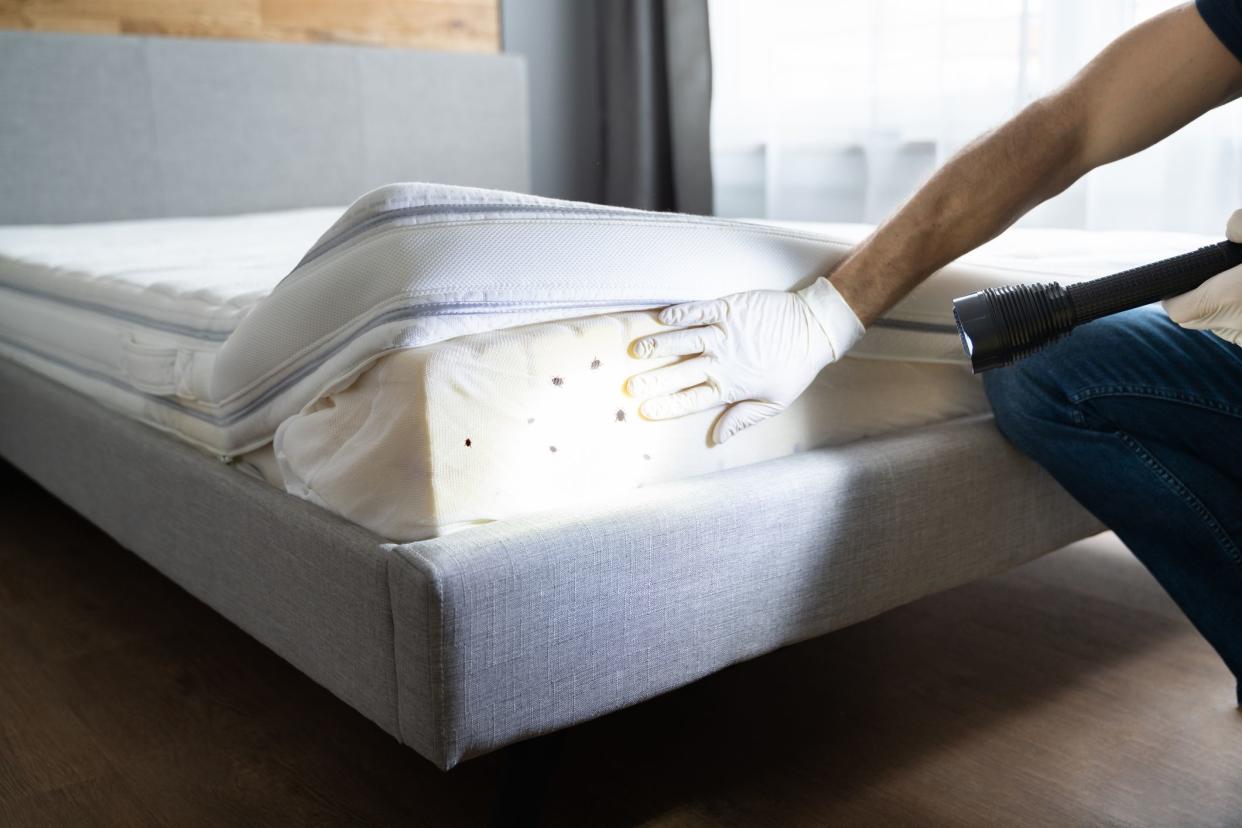
Unfortunately, it may be difficult to eliminate bed bugs. They’re incredibly small and can find their way into the tiniest crevices, easily migrate around your home or space, and prove resistant to your chosen pesticide. Repeated exposures may also become resistant to pesticides over time. If you find yourself in this position, it may be time to consult a pest-control company. These professionals are experienced with infestations and have access to industrial-grade pesticides.
Find more Cheapism home-life articles right here.
